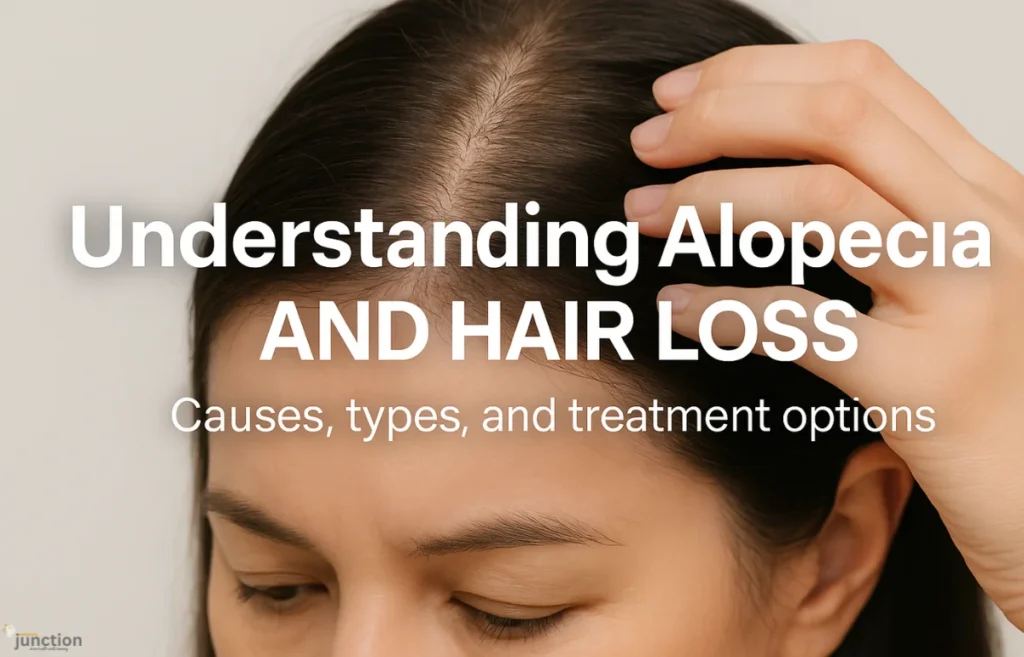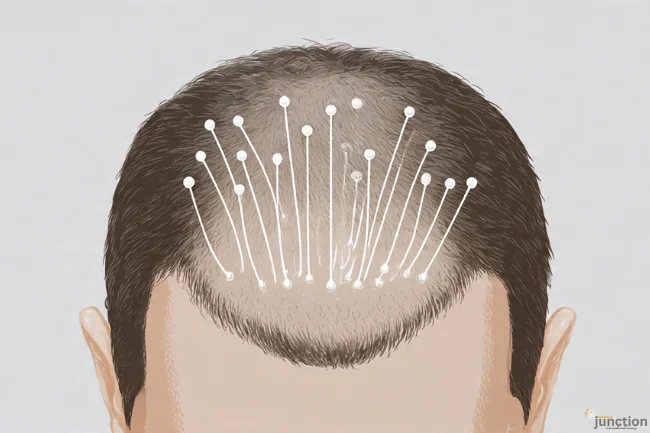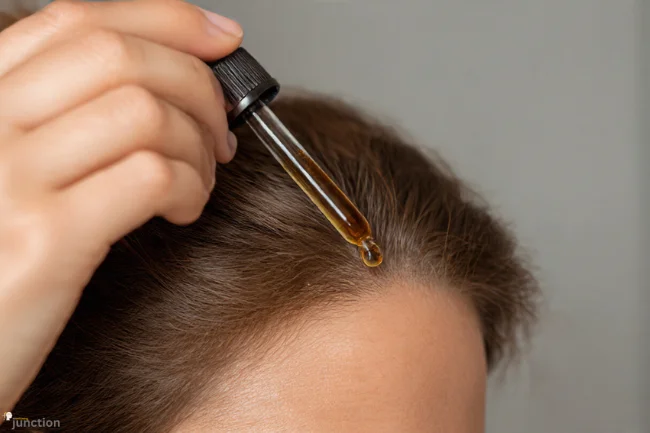Hair loss and alopecia are broad terms that cover a variety of conditions—from gradual thinning (often called pattern hair loss) to sudden patchy loss caused by immune-related disorders. To navigate the myriad of available treatments and hair loss products, it helps to understand what’s going on and how to evaluate options for hair restoration and maintenance.
What is Alopecia?
The term “alopecia” simply means “hair loss” and can include many types of hair-loss conditions. One common form is Alopecia Areata, where the immune system attacks hair follicles, causing round patches of hair loss. Other types include androgenetic alopecia (hereditary pattern hair loss) and diffuse shedding triggered by stress, illnesses, or hormonal changes.
In the case of Alopecia Areata, hair loss can be unpredictable: some people regrow hair spontaneously, others do not.
Knowing the type of hair loss you’re dealing with helps shape realistic expectations: some treatments aim to slow further loss, some promote regrowth, and some provide camouflage or cosmetic support.
Why Some Hair-Loss Products Work (and Others Don’t)
When choosing products for hair loss or alopecia, there are several key mechanisms and considerations:
a) Stimulating Follicle Activity
Some topical or oral treatments aim to wake up dormant hair follicles by improving blood flow to the scalp, supporting follicle metabolism, or modifying signalling pathways that control hair growth cycles. For example, increasing circulation can help follicles remain in the “growth” (anagen) phase longer.
b) Addressing Underlying Triggers
In autoimmune hair loss (e.g., Alopecia Areata), treatments may target the immune attack rather than just the hair. naaf.org+1 In hereditary (androgenetic) hair loss, hormones like DHT (dihydrotestosterone) play a role, so products or treatments that moderate that impact offer value.
c) Supporting Hair Shaft and Scalp Health
Even if a follicle is alive, hair may still be weak or thin if the scalp environment is poor (e.g., inflammation, dryness) or if the hair shaft is damaged. So, good products often include scalp-care ingredients, nourishing agents, and strengthening components.
d) Realistic Expectations & Timing
Hair growth is slow and steady; visible results from many treatments can take months. For alopecia, especially immune-based, there may be spontaneous remission, making it harder to attribute results solely to one product.
What to Look for in Hair Loss / Alopecia-Focused Products
When browsing the shelves or online, here are product features that tend to matter:
-
Scalp-targeted formulation: Products that are applied directly to the scalp (not just hair strands) so that active ingredients reach the follicles.
-
Safe for long-term use: Since hair loss often requires ongoing treatment, formulations with low irritation and minimal side effects are preferable.
-
Ingredient transparency: Key actives like growth-promoting agents, scalp stimulators, botanical extracts, and peptides can be helpful if backed by credible research.
-
Complementary support: Because hair loss often involves more than just the follicle (e.g., hormonal, immune, nutritional), look for products that support the scalp barrier, reduce inflammation, and nourish existing hairs.
-
Supportive lifestyle & scalp care advice: No product works alone—good scalp hygiene, avoiding harsh styling, managing stress, and ensuring nutrition all help the process.
Treatments and Product Strategies for Different Scenarios
Here are typical approaches depending on the type and severity of hair loss:
1. Mild Thinning / Early Pattern Hair Loss
-
Use scalp-targeted topicals that stimulate follicles and improve scalp circulation.
-
Support hair with strengthening agents (proteins, peptides) and overall scalp care (hydration, gentle cleansers).
-
Protect existing hair from damage (heat styling, rough handling) so you preserve what you still have.
2. Patchy Alopecia (for example, Alopecia Areata)
-
Consult a dermatologist: treatments may involve topical or injected corticosteroids to reduce immune-mediated follicle attack.
-
After initial regrowth, use maintenance scalp care products to support the follicles and hair shaft.
-
Be aware: some cases require more advanced therapies (immunomodulators) when severe.
3. Advanced Hair Loss / Scarring or Follicle Loss
-
If follicles are destroyed or scarred, products alone may be insufficient; medical interventions (e.g., transplantation) may be needed.
-
Nonetheless, supportive scalp and hair shaft products are still useful to optimize any available follicles and maintain hair health.
-
Manage expectations and focus on both appearance and scalp/hair health.
Combining Hair-Loss Products with Good Practices
-
Be consistent: Apply products as directed (many topicals require daily or twice daily applications).
-
Monitor progress: Since hair growth is gradual, take photos every few months to objectively track change.
-
Avoid damage: Styling habits, chemical treatments, and harsh cleansers can accelerate hair-shaft breakage and undermine results.
-
Support from within: Nutrition (proteins, iron, zinc, vitamins), stress management, and overall health impact hair growth too.
-
Consult a specialist: Especially if you notice sudden patchy loss (could be alopecia areata) or rapid thinning—early intervention improves options.
Final Thoughts About Alopecia
Hair loss and alopecia can be emotionally and physically challenging—but understanding the condition and taking informed action makes a difference. While no hair loss product can guarantee full regrowth in every case, selecting smart formulations that focus on follicle support, scalp health, and hair shaft nourishment gives you the best chance. Pairing these products with consistent routines and professional guidance will help you navigate this journey with more confidence and care.

I’m Salman Khayam, founder of Wellbeing Junction. I synthesize trusted information from research and expert guidance to create clear articles across health, wellness, and lifestyle topics.
Disclaimer: Content is for informational purposes only and is not medical advice. Consult a qualified expert regarding personal health or specialized questions.




